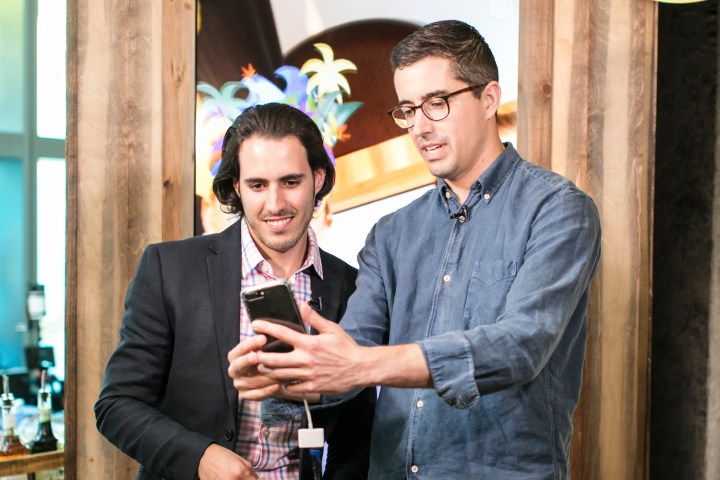
Digital Trends Español attended Hispanicize earlier this month, an event where influencers from the Hispanic community in the United States and Latin America gather to speak about the latest trends in technology, marketing, and entertainment inside their community.
While there, Juan García — Editor in Chief of our Spanish website — interviewed Facebook Product Manager Connor Hayes about the miniconference he held at this event, which was possible as part of a partnership between Facebook and Hispanicize 2017. During the conference, he spoke about the new, Snapchat-like Camera features that launched last week, the way artificial intelligence is shaping our future, and the importance of the Hispanic community to the platform as a whole.
“The main reason why we decided to invest in the Camera tool was inspired by the way people behave in the platform,” Hayes told Digital Trends. “We spoke with them, identified trends on the internet, and realized people are creating more content than ever with their smartphones. But what’s clear is that the News Feed area was not the best place to share all the pictures and videos.”
“What we wanted to do was look for a way to create content that is creative and fun with the camera. This is why these innovations are so important.”
“What we wanted to do was look for a way to create content that is creative and fun with the camera.”
Hayes explained that the new features are compatible with options offered by platforms such as Instagram, Messenger, and WhatsApp. When asked what he learned about them, he admitted that he had ”observed the connections that people have been making in the Instagram Stories section, which led us to believe they would do something similar on Facebook if offered.”
Digital Trends Español mentioned that artificial intelligence was the main subject of the conversation they held a few weeks ago with Pinterest, when speaking about the new Lens feature. Hayes answered that Facebook is also very interested in developing this type of technology. Lens allows users to look for posts related to the object they take a picture of. “Facebook has been always looking for ways to invest in artificial intelligence and machine learning. Mark Zuckerberg has spoken about this many times, and it´s something we are very proud of.”
Hayes said he cannot share more information about this, but he confirmed that they have been developing interesting projects. “The Camera will be the first portal that will allow users to experience augmented reality.”
When the Camera feature was launched, the comparison between Facebook and Snapchat was inevitable — a subject that journalist usually asked about, Hayes said. “Snapchat is the pioneer of the ‘Stories’ trend, just like Facebook was a pioneer of the feeds and other functions that are being used daily, just like other companies started the hashtags trends,” he told Digital Trends. (Hayes didn´t say Twitter by name.) “we believe that the Stories format will become a popular trend and will shape the way people share pictures and videos. On top of that, the connections will be different, depending on the platform they are using.”
Since the interview was held during Hispanicize, Hayes mentioned that Facebook is trying to engage the Hispanic community. “The importance of the Hispanic community is very high,” he said. “Spanish is the second most important language in Facebook after English, and in the United States, there are 26.7 million users who access the platform in Spanish. They are also very engaged, and this is why we want to give them more features and products, so they can connect more easily and stay true to their identities.”
Hayes also talked about a pilot project that took place in Argentina and Italy, something we might see in the United States.
“What we tried to do was to bring art to communities, based on the place they lived and the areas around them. This is something we are focusing on and are closely following. What we want for this Camera tool is to eventually be more customizable, by including the places, arts, effects, and everything a person likes in order to express themselves in a unique way.”




